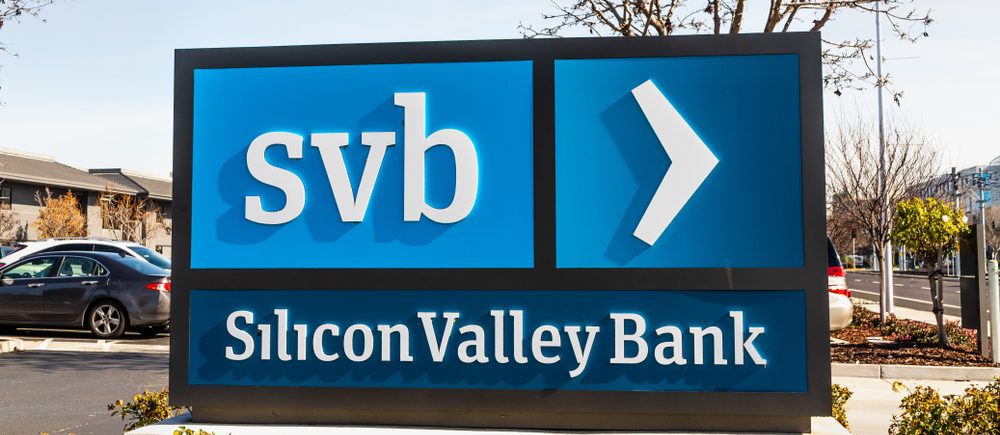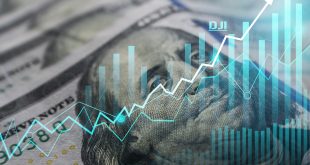Silicon Valley Bank, or SVB, was closed down by banking regulators on Friday after a dramatic, quick collapse, the second-largest bank failure in US history. SVB had only two days previously indicated that corporation was experiencing a cash problem. It initially sought to generate funds by selling shares, then it tried to sell itself, but the whole process frightened investors, and it eventually failed.
The tragedy sent shockwaves across the IT industry. Several corporations and individuals having money in SVB decided to withdraw it earlier in the week, which ironically led to the bank’s downfall.
Nevertheless, it is likely that not everyone was able to withdraw their funds, and the FDIC only covers deposits up to $250,000, so clients with more than that in SVB are in a bind.
What is Silicon Valley Bank?
SVB is described as the “go-to banking partner” for founders, entrepreneurs, and investors in the “innovation economy” on the bank’s UK website.
SVB, based in Santa Clara, California, primarily served technology employees and venture capital-backed enterprises, including some of the industry’s most well-known brands.
The bank’s first branch outside the United States is located in Shoreditch, London.
Silicon Valley Bank was established in 1983 in Santa Clara, California, and immediately became the bank for the area’s expanding technology sector and those who backed it (as was its intention). As of 2021, the bank claimed to be banking for roughly half of all US venture-backed firms.
It also serves as a banking partner for many of the venture capital organisations that invest in startups. The SVB refers to itself as a “financial partner of the innovation economy.” All of this essentially implies that it is deeply embedded in the financial architecture of the tech industry, particularly startups.
Why did it collapse?
In the United States, Silicon Valley Bank has taken a blow as technology companies have declined in value over the previous year. This, combined with the Federal Reserve’s aggressive intention to raise interest rates to combat inflation, led to the bank’s collapse.
For the last few years, the bank purchased billions of dollars in bonds using client deposits, like a bank would ordinarily do.
This is typically a safe option. Yet, the value of such assets declined since they paid lower interest rates than a comparable bond would pay in today’s higher interest rate environment.
Normally, this isn’t a concern because banks keep things for a long time — until they need to sell them in an emergency.
Customers in Silicon Valley, on the other hand, were mostly start-ups and other tech-centric businesses.
Customers began withdrawing their Silicon Valley deposits as the firms sought to obtain further finance.
To accommodate consumer withdrawal requests, the bank had to begin selling its own assets.
Because Silicon Valley clients were largely wealthy individuals and firms, they were likely more concerned about a bank failure because their accounts exceeded the government-imposed deposit insurance cap of $250,000 (£206,290).
This necessitated selling generally secure bonds at a loss, and the losses accumulated to the point where Silicon Valley Bank was practically bankrupt.
The bank attempted to acquire more capital from outside investors but was unsuccessful. A bank run drove Silicon Valley to its knees.
Bank authorities had no alternative but to take Silicon Valley Bank’s assets in order to preserve the bank’s remaining assets and deposits.
Its collapse has already resulted in more than $150 billion (£123,772,500) in deposits being locked up in receivership, which means that start-ups and other enterprises may be unable to access their funds for an extended period of time.
What happens next?
Silicon Valley Bank still has two major difficulties, both of which might lead to greater problems if not remedied fast.
The most pressing issue is SVB’s big deposits, which exceed $250,000 (£206,290) and are not guaranteed by the Federal Reserve.
According to the Federal Deposit Insurance Corporation, insured deposits will be accessible on Monday.
Yet, due to the bank’s customers being mostly start-ups and rich IT employees, the great majority of SVB’s deposits were uninsured.
For the present, all of that money is inaccessible and will most certainly have to be distributed in stages.
Nevertheless, many firms cannot afford to wait weeks for money to cover wages and office bills. It may result in furloughs or layoffs.
Two, Silicon Valley Bank has no buyer.
Normally, bank authorities hunt for a stronger bank to take over the assets of a failing bank, but no other bank has come forward in this case.
A bank buying SVB might go a long way towards resolving some of the issues associated with money that start-ups are now unable to access.
What about in the UK?
Customers of SVB UK will be able to access their deposits and banking services as usual following the sale to HSBC for a nominal fee of £1, according to HSBC and the Government.
According to the Bank of England, SVB UK had around £6.7 billion in deposits and approximately £5.5 billion in loans as of Friday last week, while its balance sheet was at £8.8 billion.
The Bank of England emphasised that following the transaction, all services at SVB UK will continue to function as usual, with all workers remaining employed by the bank.
The larger UK banking sector “remains secure, healthy, and properly capitalised,” according to the Bank.
“That SVB has a buyer will be a comfort to the entrepreneurs and thousands of individuals working in the digital and start-up industries, who woke up with great uncertainty this morning,” said Shadow Chancellor Rachel Reeves.
How Silicon Valley Bank (SVB) crisis may impact markets
The immediate reaction of global markets was a steep drop in all major indexes on Friday. The three American benchmarks experienced their worst week since 2023, while the ASX 200 fell for the sixth week in a row. The US dollar weakened following the news as haven assets, such as the Japanese Yen, the Eurodollar, gold, and bonds. The fear gauge, the Volatility Index, spiked from under 20 to almost 30 at the highest before pulling back to just under 25 last week.
Global equities markets and the US currency are under pressure following the Silicon Valley Bank (SVB) crisis. In the previous three sessions, the US dollar rate has retraced from three-month highs, with the Dollar Index falling from about 106 to around 103, while important Wall Street benchmark indexes dropped up to 2% on Friday. Nonetheless, gold prices today rose to $1,880 per ounce, a $65 per ounce increase from Thursday’s lows of roughly $1,815 per ounce. After failing to maintain yields above 4%, US bond yields have begun to rise once more.
While US equity futures rose at the time of publication, the Australian and New Zealand stock markets declined. Global bond rates fell dramatically, with the Australian 10-year bond yield falling 21 basis points to 3.49%, the lowest since February 6. The Japanese 10-year government bond yield fell 11 basis points to 0.39%, the lowest since the BOJ expanded its cap limit to 0.50% in late December.
UPDATE: HSBC pays £1 to rescue UK arm of Silicon Valley Bank after all-night talks
During all-night negotiations, HSBC announced an agreement to purchase the UK division of Silicon Valley Bank, a failed US tech startup lender.
HSBC reported that its ring-fenced subsidiary in the United Kingdom, HSBC UK Bank, has agreed to buy SVB U.K. for £1 ($1.21). The parent company’s assets and liabilities are not included in the transaction.
The acquisition “strengthens our commercial banking franchise and enhances our ability to serve innovative and fast-growing firms, including in the technology and life-science sectors, in the U.K. and internationally,” said HSBC Group CEO Noel Quinn.
“SVB U.K. customers can continue to bank as usual, safe in the knowledge that their deposits are backed by the strength, safety and security of HSBC.”
SVB U.K. had loans of roughly £5.5 billion and deposits of around £6.7 billion as of Friday, with £88 million in full-year profit before tax in 2022, according to HSBC’s Monday statement. SVB U.K.’s tangible equity is expected to be roughly £1.4 billion, according to the bank, but the “final computation of the gain deriving from the purchase will be revealed in due course.”
The transaction, brokered by the Bank of England in cooperation with the UK Treasury, would preserve SVB U.K. clients’ money, according to a statement from the Treasury.
British Finance Minister Jeremy Hunt stressed that the deal “ensures customer deposits are protected and can bank as normal, with no taxpayer support.”
“The U.K.’s tech sector is genuinely world-leading and of huge importance to the British economy, supporting hundreds of thousands of jobs,” he added.
 Noor Trends News, Technical Analysis, Educational Tools and Recommendations
Noor Trends News, Technical Analysis, Educational Tools and Recommendations





